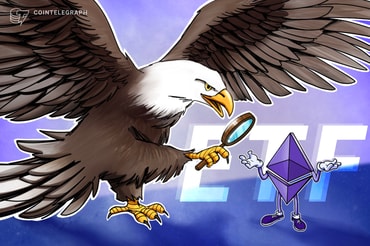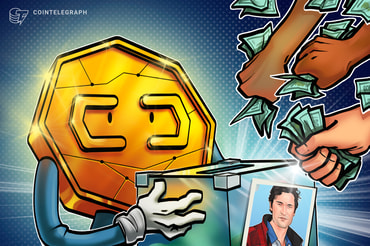Polkadot Price Outlook: Current Trends and Predictions

As of May 2025, the Polkadot price is hovering around $3.99, reflecting a pullback from its 2021 all-time high near $55. Polkadot (DOT) is the native token of a sharded multichain network launched by Ethereum co-founder Gavin Wood. Its architecture is built to connect disparate blockchains into a unified ecosystem, enabling interoperability across networks. With hundreds of live projects across DeFi, gaming, digital identity, and more, Polkadot’s team often touts its potential to power a new Web3 era. Institutional interest is also emerging: for example, Grayscale recently filed with the SEC to create a crypto ETF based on DOT, signaling growing mainstream attention.
Despite these strengths, Polkadot faces the same risks as other crypto assets. Its price has dipped sharply from past peaks (currently down ~90% from 2021’s highs). Volatility and regulatory uncertainty affect DOT just as they do Bitcoin and Ethereum. To assess if Polkadot is a good investment, one must weigh its technical innovations against these market factors.
Is Polkadot a Good Investment?
Polkadot’s design offers clear advantages. It utilizes a relay chain to secure multiple parachains, enabling independent blockchains to share security and communicate with each other. This gives it strong interoperability and scalability compared to single-chain networks.
Key strengths include:
- Interoperability: Polkadot lets developers spin up custom chains (parachains) that talk to each other and to external networks. This can reduce blockchain silos by allowing seamless data transfers between ecosystems.
- Scalability: Its sharded architecture enables many chains to process transactions in parallel, alleviating bottlenecks seen on networks like Ethereum.
- Decentralized Governance: DOT holders govern protocol upgrades via on-chain voting. Polkadot’s new Gov2 system is designed to make decision-making more democratic, avoiding control by a small clique.
- Growing Ecosystem: Over 600 projects and more than 1,000 dApps are already building on Polkadot’s parachains. Examples include Moonbeam and Acala in DeFi, gaming chains, and identity solutions. This breadth of use cases fuels demand for DOT as a network token.
On the other hand, Polkadot has drawbacks that temper its investment case:
- Complexity: Its advanced architecture is powerful but sophisticated. Critics note that Polkadot’s learning curve can deter developers and new users. Building and maintaining parachains and cross-chain bridges is more complicated than deploying a single Ethereum smart contract.
- Security & Centralization: As a relatively young platform, potential vulnerabilities may surface over time. Some observers argue that Polkadot’s governance still concentrates power among a core team and initial validators. True decentralization will depend on widespread participation from validators and effective DAO governance.
- Competition: Polkadot vies for an interoperability niche alongside other Layer-0 projects (like Cosmos) and evolving Layer-1 solutions (like Ethereum 2.0 and Avalanche). Success is not guaranteed, and slow parachain rollouts have left some investors cautious.
In summary, Polkadot offers innovative features that many find promising, but it also carries the typical risks associated with cryptocurrencies. Its investment potential hinges on continued developer interest and network growth. As of now, with the Polkadot price at just a few dollars, returns could be substantial if the technology wins out; however, the downside remains if adoption lags or markets remain weak.
Will DOT Reach $100?
Hitting $100 per DOT would imply a market cap in the hundreds of billions (given ~1.6 billion circulating DOT). This is a bold target from today’s standpoint. Most analysts agree it’s technically possible but unlikely without extraordinary conditions. For context, Changelly’s analysis notes that the Polkadot price has twice surpassed $50 in the past, so a rise to $100 “is possible,” but “it would take a significant market boom”. Similarly, a CryptoNews forecast bluntly states, “yes,” $100 can be reached – but only envisions a peak around $20 by 2035 as a milestone “on the path toward triple-digit valuations.”
Even in the most optimistic scenarios, the Polkadot price reaching $100 would require widespread adoption. For example, YouHodler’s high-price forecast (a bullish case) predicts that DOT will get $50–$100 by 2030. However, their moderate outlook still caps 2030 at $30–$50, and a pessimistic scenario limits DOT to $5–$20. These wide ranges underscore the speculative nature of such targets. Polkadot would need massive ecosystem growth, a huge TVL (total value locked) in its parachains, and likely a sustained bull run across the crypto market to even come close.
Even compared to wild swings in other coins suggests skepticism. For instance, the Dogecoin price – a popular meme coin – is currently around $0.19 and has never been as high as $100, despite some hype. Likewise, Polkadot’s value is fundamentally tied to usage (staking, cross-chain transactions, governance), not just hype. In short, a DOT price prediction of $100 typically requires “exceptional growth” and a very favorable crypto climate. Most experts view $100+ as a long-shot milestone rather than an expected outcome within this decade.
What Will the Polkadot Price Be in 2030?
Looking toward 2030, forecasts generally call for DOT to be up from today but still far below $100. Analysts use a variety of methods (technical charts, fundamental models, on-chain metrics), yielding different estimates. As one example, Changelly’s long-term DOT price prediction expects an average DOT price around $33.04 in 2030. They see a low near $32.07 and a high around $40.49 for that year. InvestingHaven’s outlook is similar, projecting about $36.36 by 2030. These forecasts suggest solid growth (roughly 5–10x current levels), assuming Polkadot’s tech and adoption advance as hoped.
Other models outline scenario ranges rather than single figures. For instance, one analysis breaks it into three cases:
- Optimistic (High): In a very bullish market with widespread blockchain adoption and Polkadot success, DOT could reach $50–$100 by 2030.
- Moderate: If the Polkadot price steadily grows its share of the blockchain ecosystem, prices might hover around $30–$50 by 2030.
- Pessimistic (Low): If Polkadot’s growth stalls (due to competition, delays, or crypto winter), DOT might only trade around $5–$20 in 2030.
Averaging these viewpoints, many experts foresee a DOT price in the low tens of dollars by 2030 under normal conditions. Changelly and InvestingHaven are in line with that, and even relatively bullish scenarios top out well below $100. Key factors to watch include Polkadot’s expansion (e.g. more parachains, higher Total Value Locked in its DeFi ecosystem) and macro trends like regulation and global crypto cycles. Polkadot’s heavy staking (often over 50% of DOT locked up) can also amplify price moves by limiting selling pressure.
Of course, long-term crypto predictions have wide error bars. While daily headlines might fixate on bitcoin price prediction today, Polkadot’s future depends on its own fundamentals – inter-chain messaging protocols, on-chain governance upgrades, and real-world use cases. If Polkadot’s interoperability vision comes to fruition, DOT could be worth several tens of dollars by 2030. If not, it may simply retrace or modestly exceed current valuations. In summary, most current DOT price predictions for 2030 fall in the $20–$50 range, reflecting cautious optimism.
Conclusion
Polkadot has clear technological promise as a multi-chain network, and its price outlook ranges from subdued to bullish, depending on the level of adoption. At today’s Polkadot price (about $4), it already offers leverage to the network’s success. A balanced view acknowledges that Polkadot could be a strong investment if its unique features win traction, but also that its complex architecture and market competition pose risks. As with any crypto, diversification and awareness of market cycles are key. Ultimately, Polkadot’s potential will be tested by real user activity and partnerships, not just hype cycles, as 2030 approaches.
Source: CoinMarketCap
About the Author: Sarah Zimmerman is a seasoned crypto and Web3 news writer passionate about uncovering the latest developments in the digital asset space. With years of hands-on experience covering blockchain innovations, cryptocurrency trends, and decentralized technologies, she strives to deliver insightful and balanced news that empowers her readers. Her work is dedicated to demystifying complex topics and keeping you informed about the ever-evolving world of technology.
Sarah Zimmerman
Published on Other News Site

















